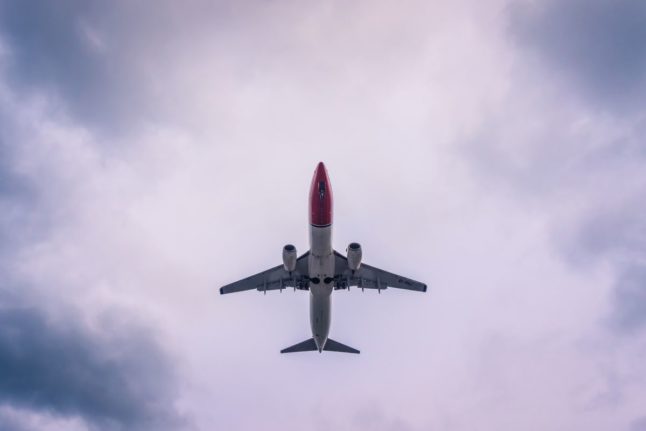New routes from Norwegian Air
Norwegian Air has announced a number of new routes from Norway next year.
Next summer, there will be regular flights between Oslo Gardermoen, the largest airport in Norway, and Lyon, Montpellier, Zadar, Milas/Bodrum and Basel. The route from Oslo to Wroclaw will also make a return in 2024.
The route to Lyon will be the second such offering from Gardermoen after Spanish airline Volotea launched its route earlier this autumn.
Travellers from Sandefjord will benefit from two new routes next year. Travellers can take direct trips to Palma de Mallorca and Barcelona. The flights from Torp join the Norwegian flights to Alicante and Malaga.
Passengers from Stavanger Sola will be able to enjoy flights to Milan/Bergamo.
While the flights for new routes don’t take off until next year, tickets are already on sale.
Meanwhile, there will be new routes from Tromsø to Berlin, Paris and Bergamo/Milano from January 15th.
Airfare will become more expensive
Flying in and out of Norway will likely become more expensive next year. This is because the fees charged to airlines to use Norwegian airports will be increased to help keep state-owned airport operator Avinor afloat.
Industry experts believe this will lead to increased airfares as the increased costs for airlines will be passed onto passengers.
This may be offset by a reduction in the air passenger tax. The air passenger tax is directly applied to tickets and costs 80 kroner for flights within Europe and 320 kroner for flights outside of Europe.
Norse Air resumes flights to the US
Norse Air has paused a number of its long-haul flights for the winter. The direct routes from Oslo to New York and Los Angeles have been paused until the summer. When the New York flight returns, it will fly three times a week from May 16th.
The Los Angeles route will also resume in the spring.
Norway’s krone is unlikely to strengthen significantly
Norway’s weak krone struggled throughout 2023. Next year, things are still not set in stone.
The weak Norwegian krone could fall further next year, or it could strengthen. Even if it does strengthen, it is unlikely to do so massively. This means those travelling to Norway next year can enjoy a favourable exchange rate.
READ ALSO: Five reasons why 2024 will be a good time to visit Norway
EES border systems to enter service
The EU’s Entry/Exit System (EES) is a digital scheme to register non-EU citizens each time they cross the external borders of the Schengen Area by air, land or sea.
The EES will replace the manual stamping of passports with an electronic record of entries and exits. It will register the person’s name, type of travel document, fingerprints and facial images and the date and place of arrival and departure.
The system aims to tighten up border security, including the enforcement of the rule of maximum 90-day stays in any 180-day period for short-term visitors.
The European Travel Information and Authorization System (ETIAS), expected six months later, will require people from visa-exempt countries who travel to the Schengen area for short stays to apply for an authorisation before departure.
The EES will arrive between quarters three and four of 2024. The ETIAS isn’t expected to arrive until 2025. Reporting in the UK media suggests Sunday, October 6th 2024 as the launch date for the EES, although this has not been confirmed by the European Commission.
The system is for the EU and Schengen area’s external borders, so doesn’t apply if you are travelling between Norway and Denmark. It would apply if entering Norway from from a non-EU, such as flying in from the US or UK.
Norwegian to complete takeover of Widerøe
Norwegian Air’s takeover of its rival Widerøe has been approved by the Norwegian Competition Authority. The effects of the takeover will begin to be felt in the New Year.
Norwegian has said that the takeover would make both airlines more attractive to passengers. Widerøe serves more than 40 small and medium-sized airports across Norway in rural, northern and fjord regions. The takeover connects Widerøe’s network to Norwegian’s national and international routes.
When the takeover is complete, Widerøe will continue operating as an independent company and brand and will retain its headquarters in Bodø.
You will be able to buy a ticket on a train for the same price
The additional charge for buying a ticket onboard a train in Norway will be scrapped from January.
This means passengers will no longer be required to pay an additional 40 kroner when purchasing a ticket aboard the train.
Clampdown on foreign tour busses
New rules will clamp down on foreign tour buses operated by foreign drivers and companies starting from the New Year.
Foreign buses will only be allowed to carry passengers on Norwegian roads for a maximum of 20 consecutive days and 30 days in total. The change aims to prevent foreign companies from out-pricing Norwegian ones and prevent social dumping in the transport and tourism sector.



 Please whitelist us to continue reading.
Please whitelist us to continue reading.
Member comments